Abstract
Ten pigeons pecked left and right keys in a discrete-trials experiment in which access to food was contingent upon changeovers to the right key after particular runs of left-key pecks. In each of three sets of conditions, two run lengths were reinforced according to a concurrent variable-interval schedule: reinforcement followed runs of either 1 or 2, 1 or 4, or 2 or 4 left-key pecks preceding changeovers. The intertrial interval separating successive pecks was varied from .5 to 10.0 sec, and the relative frequency of reinforcement for the shorter of the two reinforced runs was varied from 0 to .75. The contingencies established local behavioral patterning that roughly approximated that required for reinforcement. For a fixed pair of reinforced run lengths, preference for the shorter of the two frequently increased as the intertrial interval increased and therefore as the minimum temporal durations of both reinforced runs increased. Preference for the shorter of the two also increased as its corresponding relative frequency of reinforcement increased. Both of these effects on preference were qualitatively similar to corresponding effects in previous research with two different kinds of reinforced behavioral patterns, interresponse times and interchangeover times. In all these experiments, analytical units were found in the temporal patterns of behavior, not in the behavior immediately contiguous with a reinforcer. It is suggested that a particular local temporal pattern of behavior is established to the extent to which it is repeatedly remembered when reinforcers are delivered, regardless of whether the delivery of a reinforcer is explicitly contingent upon that pattern.
Keywords: choice, variable-interval schedules, changeovers, differential reinforcement, behavioral patterning, pigeons
Full text
PDF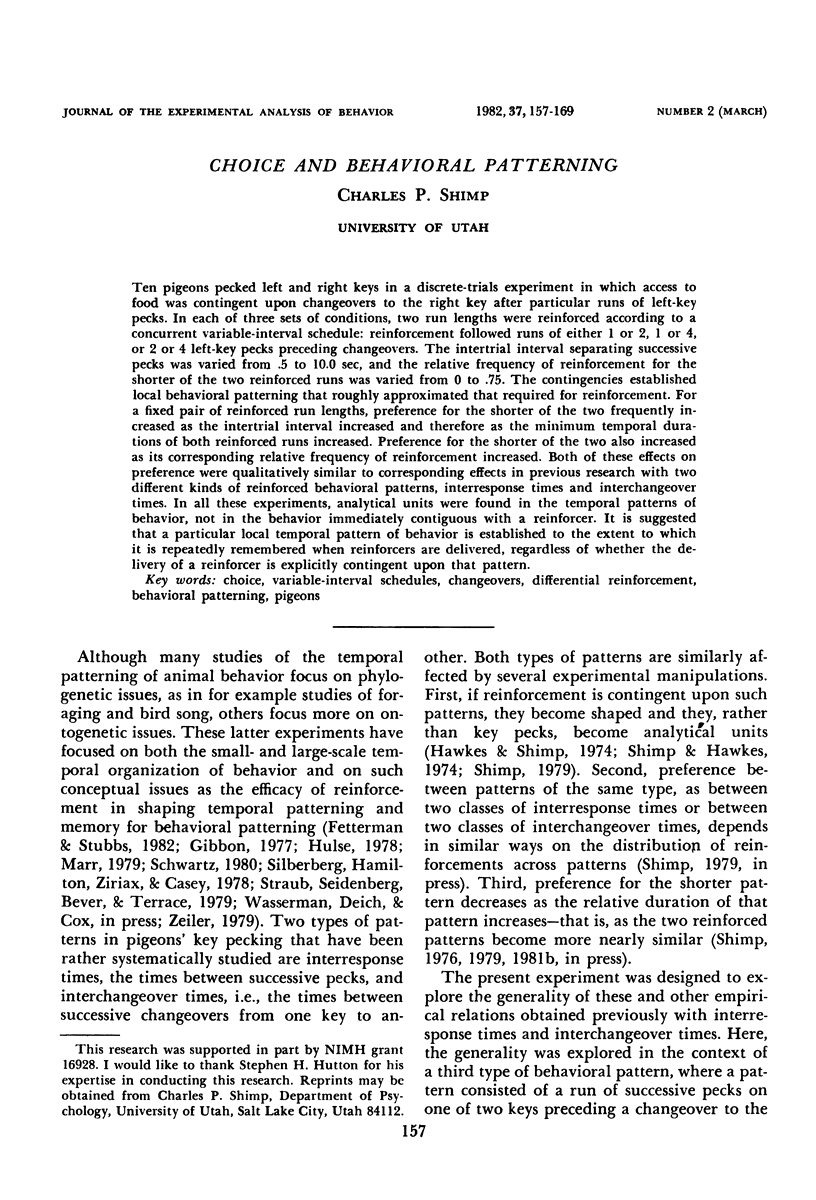
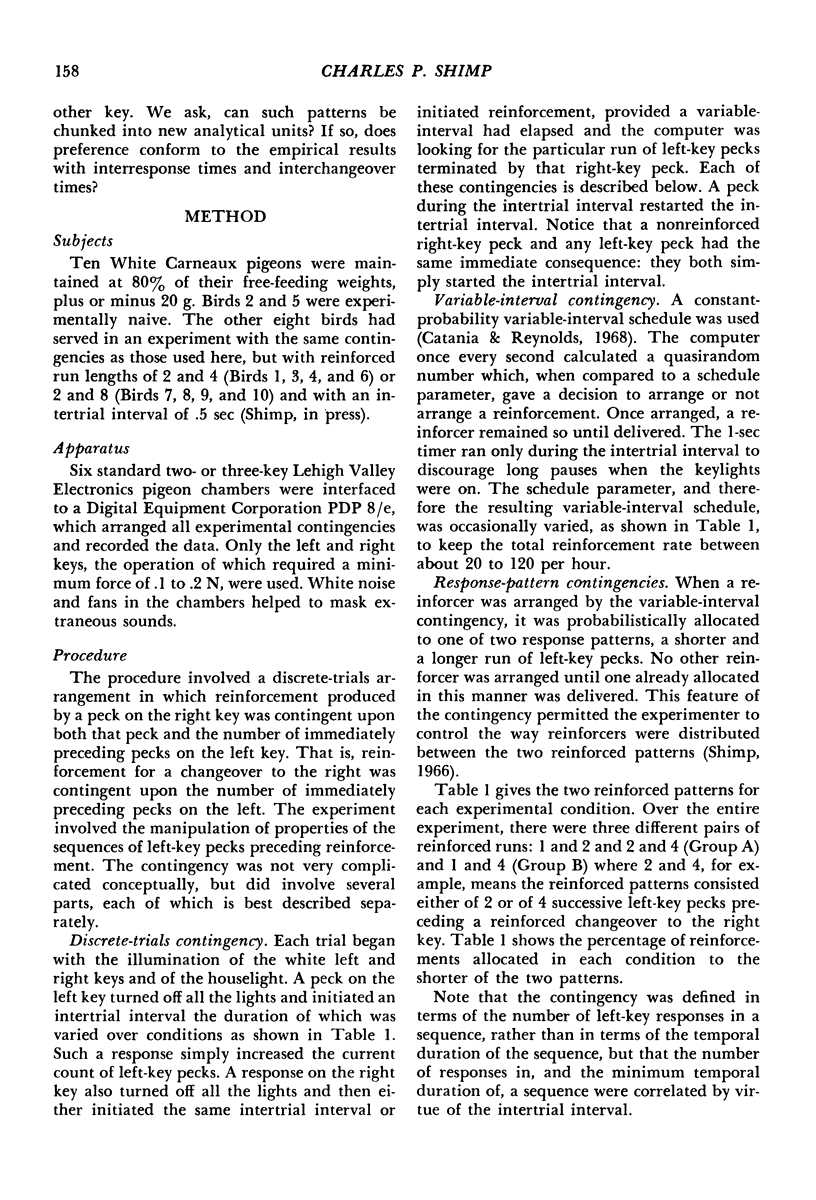
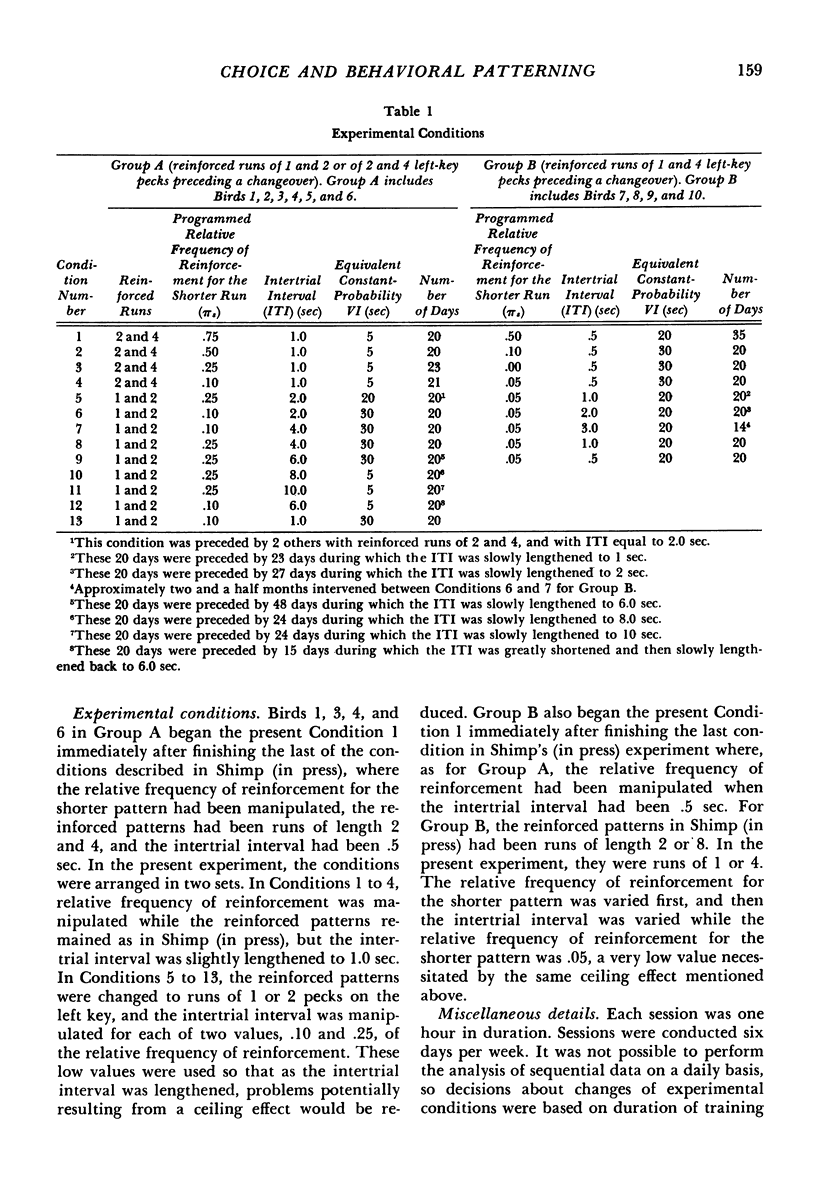
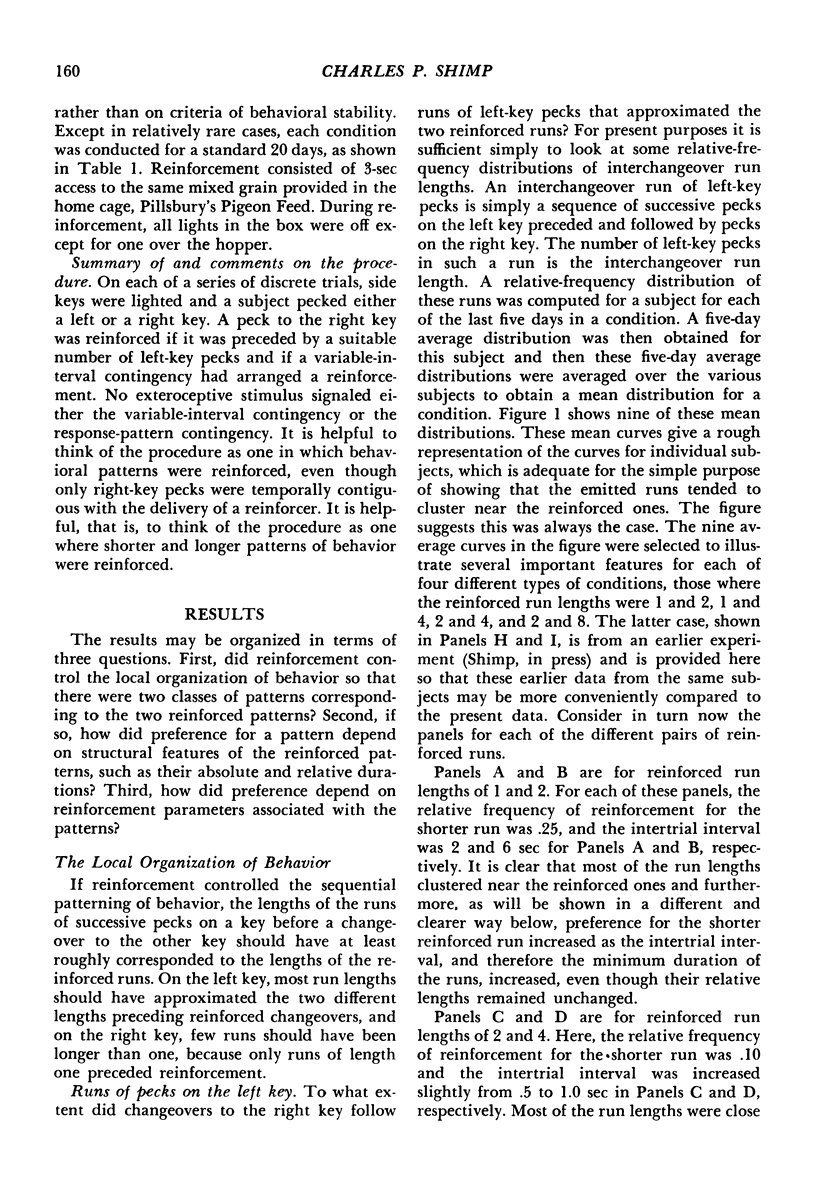

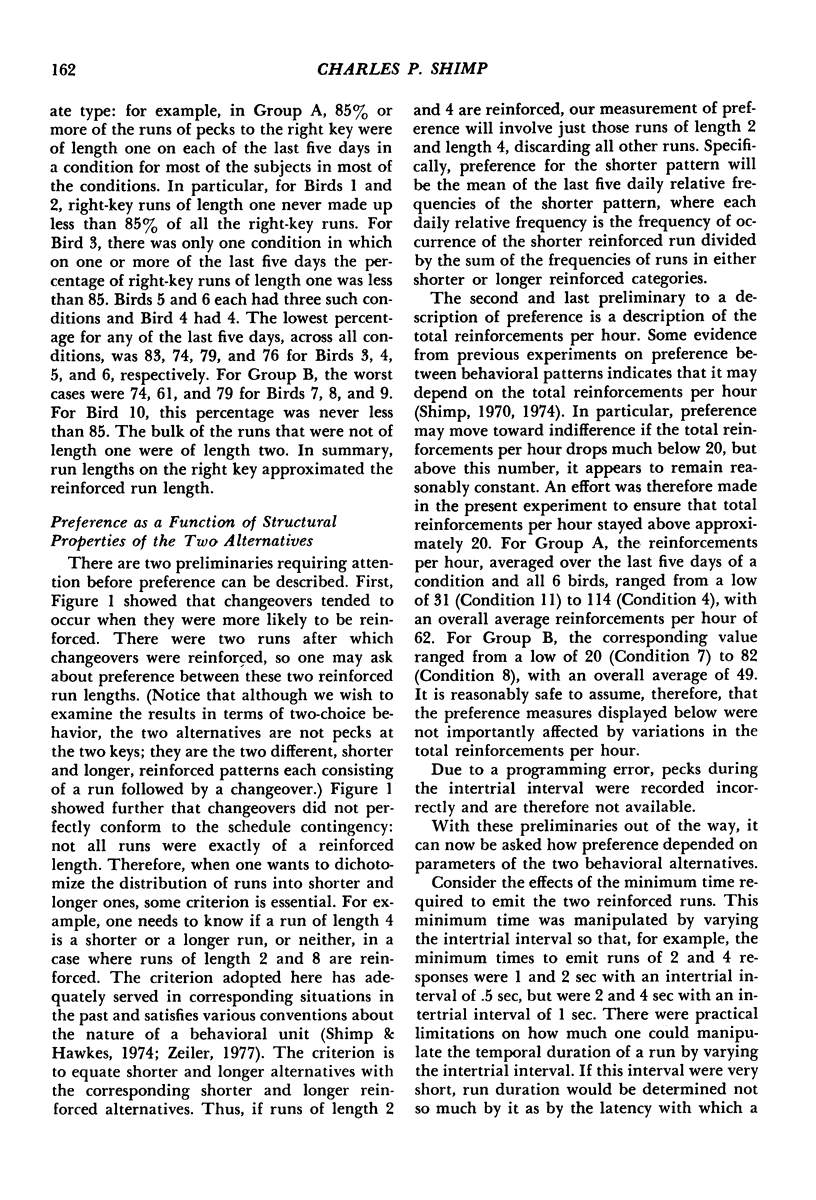
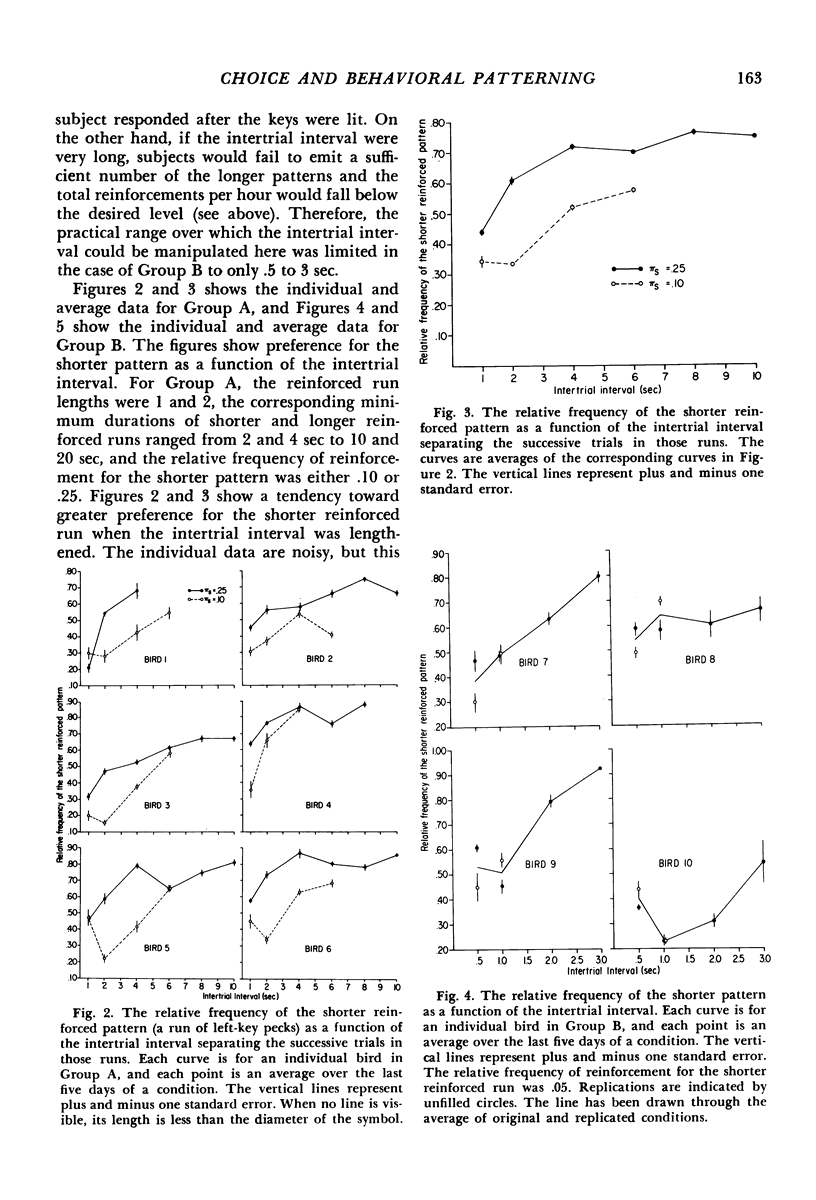
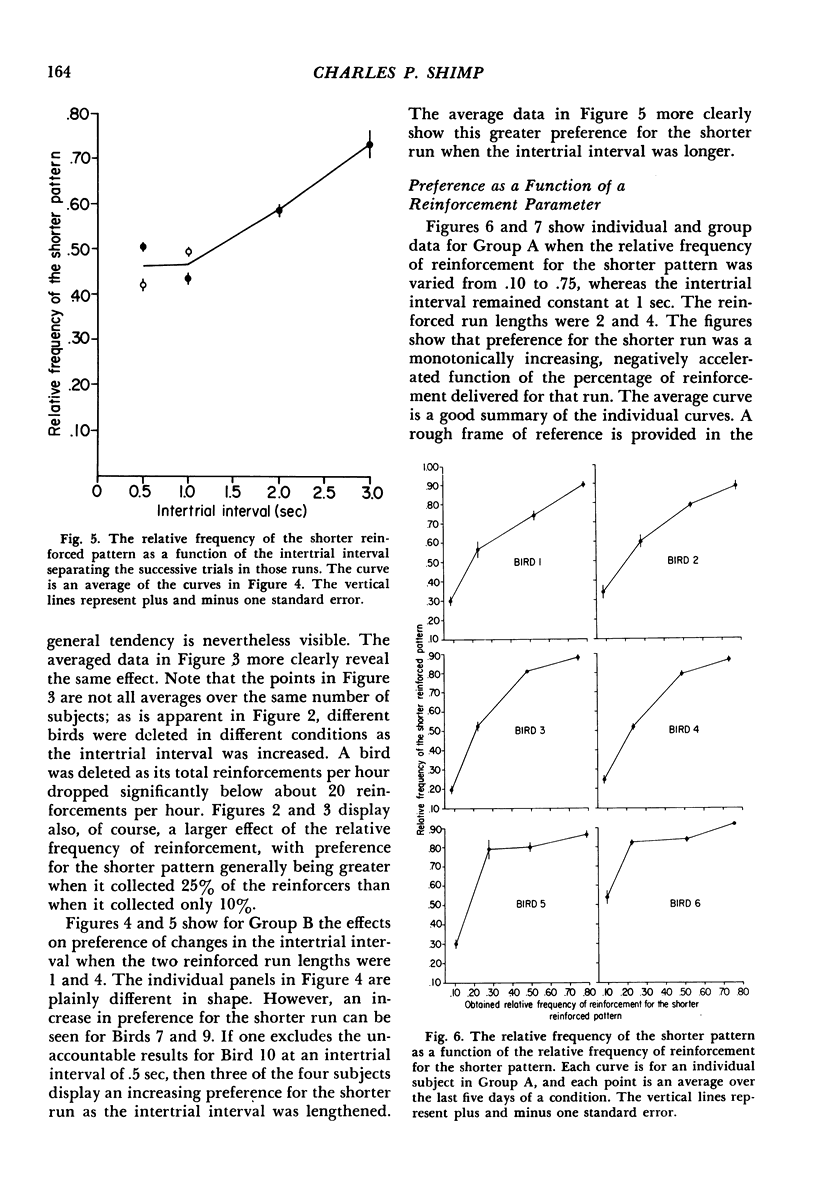
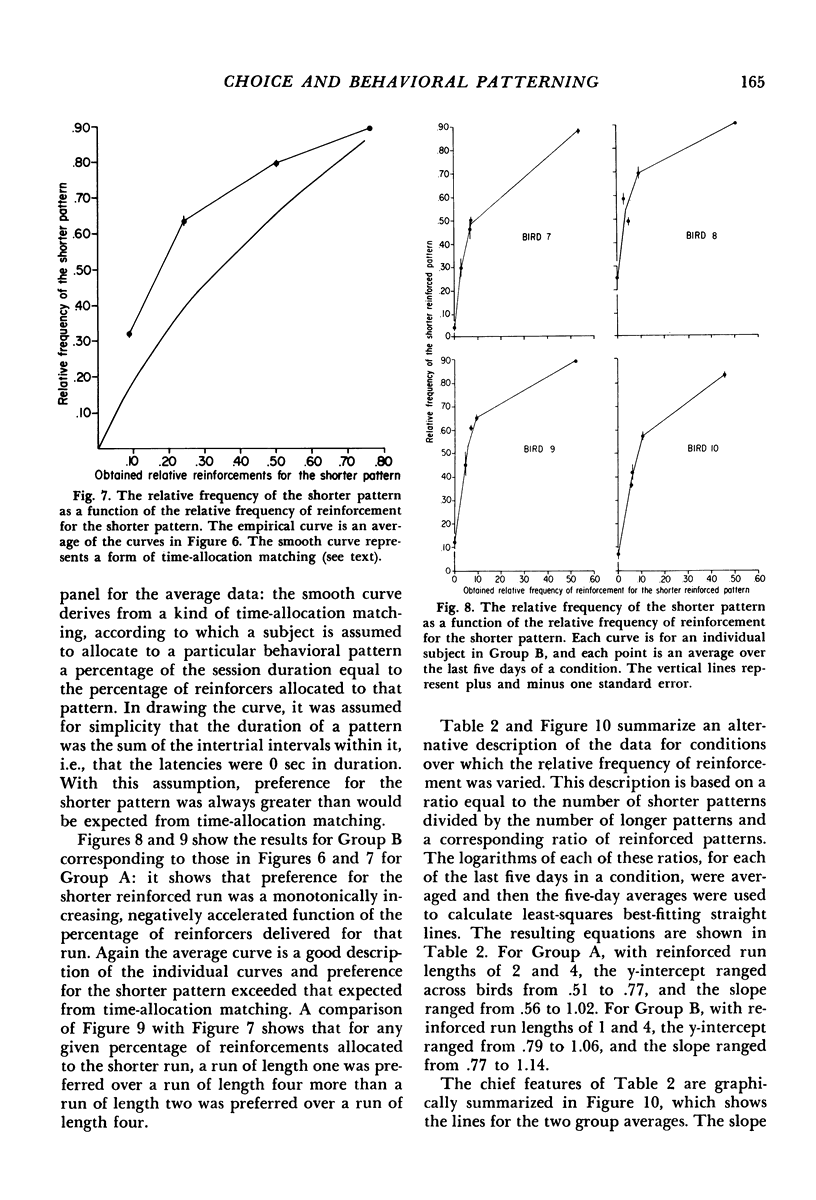
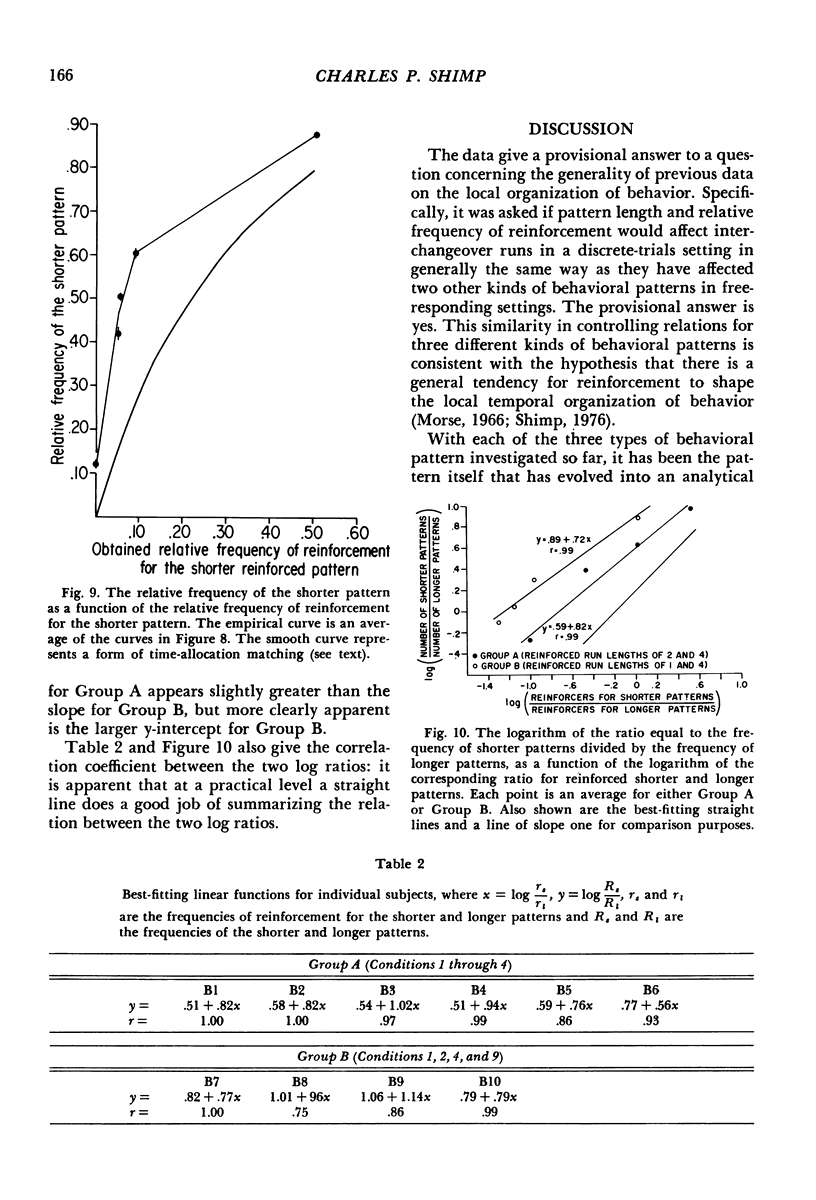
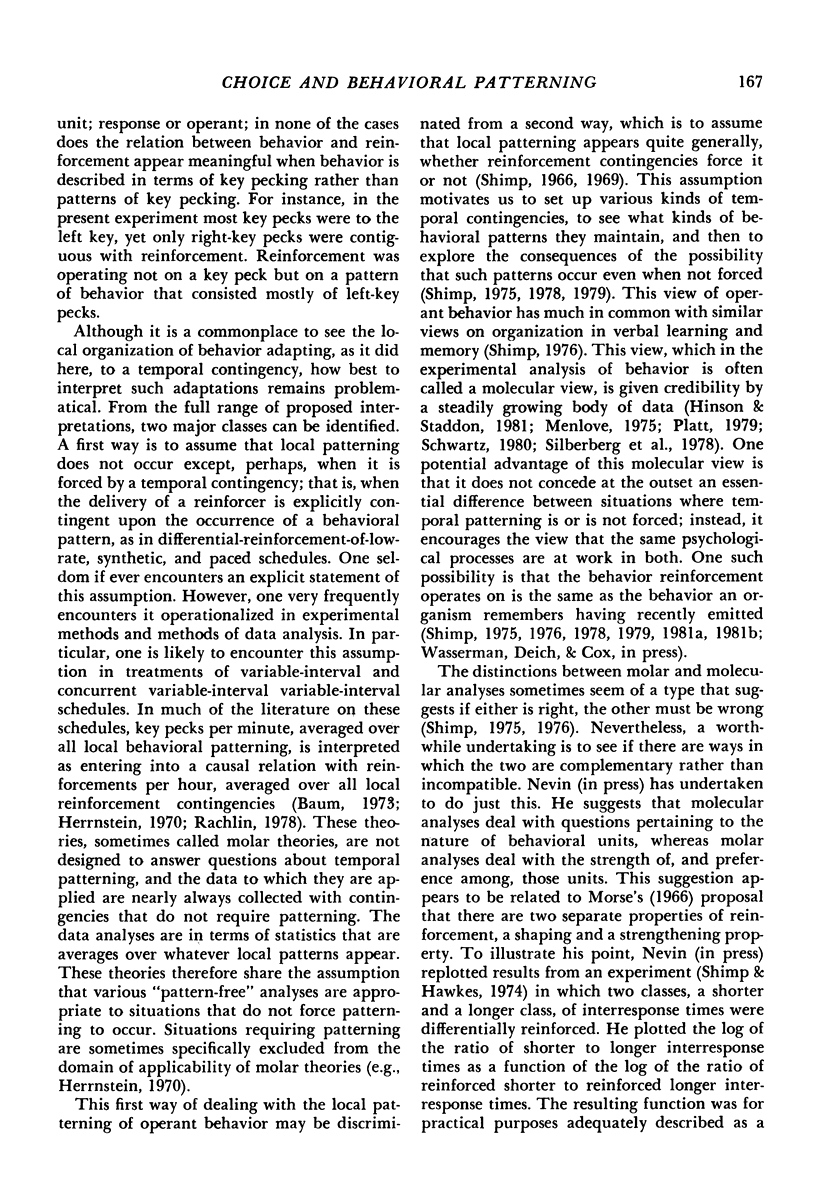
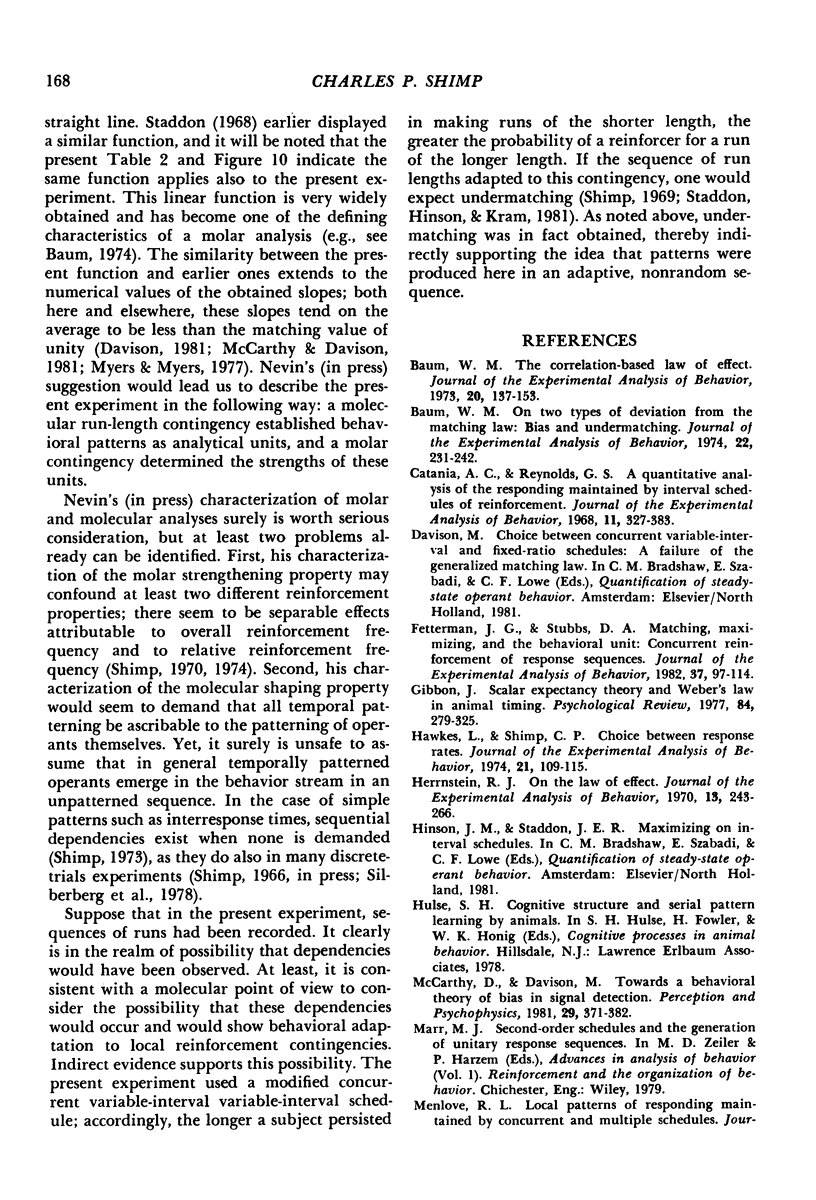
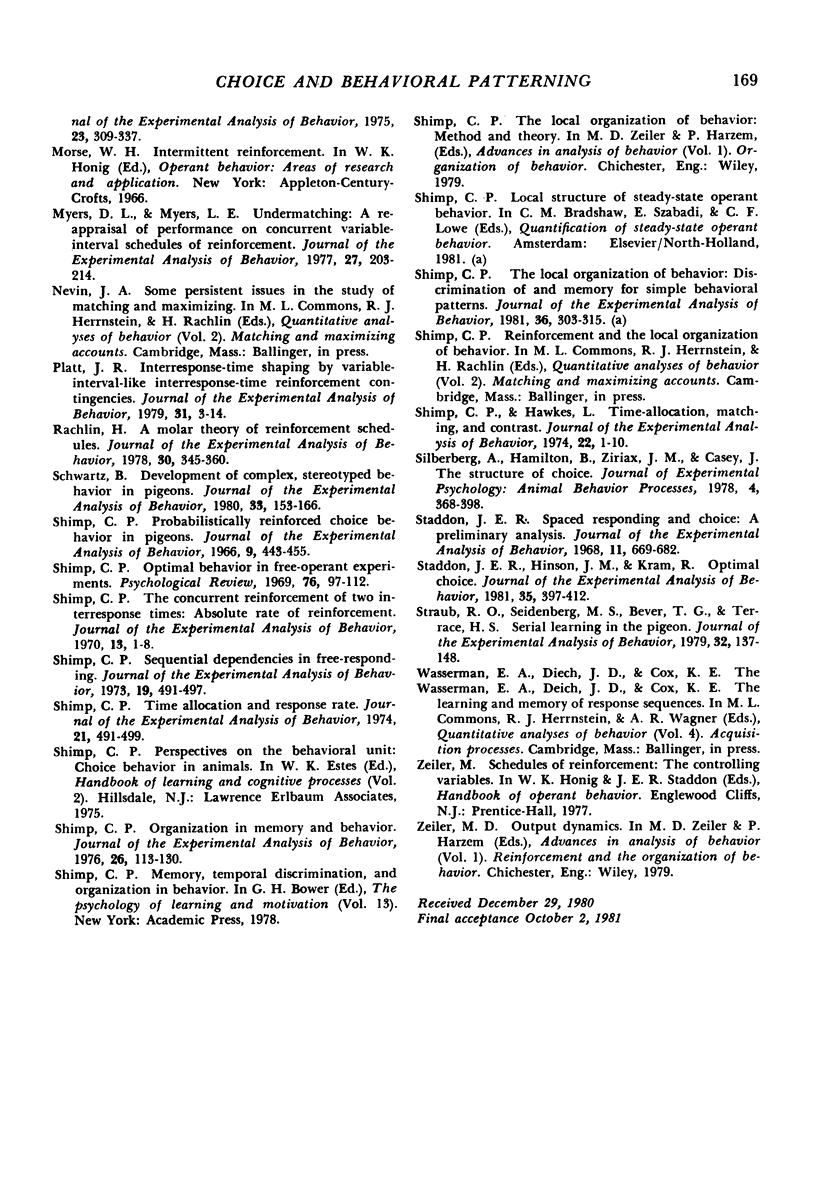
Selected References
These references are in PubMed. This may not be the complete list of references from this article.
- Baum W. M. On two types of deviation from the matching law: bias and undermatching. J Exp Anal Behav. 1974 Jul;22(1):231–242. doi: 10.1901/jeab.1974.22-231. [DOI] [PMC free article] [PubMed] [Google Scholar]
- Baum W. M. The correlation-based law of effect. J Exp Anal Behav. 1973 Jul;20(1):137–153. doi: 10.1901/jeab.1973.20-137. [DOI] [PMC free article] [PubMed] [Google Scholar]
- Catania A. C., Reynolds G. S. A quantitative analysis of the responding maintained by interval schedules of reinforcement. J Exp Anal Behav. 1968 May;11(3 Suppl):327–383. doi: 10.1901/jeab.1968.11-s327. [DOI] [PMC free article] [PubMed] [Google Scholar]
- Fetterman J. G., Stubbs D. A. Matching, maximizing, and the behavioral unit: concurrent reinforcement of response sequences. J Exp Anal Behav. 1982 Jan;37(1):97–114. doi: 10.1901/jeab.1982.37-97. [DOI] [PMC free article] [PubMed] [Google Scholar]
- Hawkes L., Shimp C. P. Choice between response rates. J Exp Anal Behav. 1974 Jan;21(1):109–115. doi: 10.1901/jeab.1974.21-109. [DOI] [PMC free article] [PubMed] [Google Scholar]
- Herrnstein R. J. On the law of effect. J Exp Anal Behav. 1970 Mar;13(2):243–266. doi: 10.1901/jeab.1970.13-243. [DOI] [PMC free article] [PubMed] [Google Scholar]
- McCarthy D., Davison M. Towards a behavioral theory of bias in signal detection. Percept Psychophys. 1981 Apr;29(4):371–382. doi: 10.3758/bf03207347. [DOI] [PubMed] [Google Scholar]
- Myers D. L., Myers L. E. Undermatching: a reappraisal of performance on concurrent variable-interval schedules of reinforcement. J Exp Anal Behav. 1977 Jan;27(1):203–214. doi: 10.1901/jeab.1977.27-203. [DOI] [PMC free article] [PubMed] [Google Scholar]
- Platt J. R. Interresponse-time shaping by variable-interval-like interresponse-time reinforcement contingencies. J Exp Anal Behav. 1979 Jan;31(1):3–14. doi: 10.1901/jeab.1979.31-3. [DOI] [PMC free article] [PubMed] [Google Scholar]
- Rachlin H. A molar theory of reinforcement schedules. J Exp Anal Behav. 1978 Nov;30(3):345–360. doi: 10.1901/jeab.1978.30-345. [DOI] [PMC free article] [PubMed] [Google Scholar]
- Schwartz B. Development of complex, stereotyped behavior in pigeons. J Exp Anal Behav. 1980 Mar;33(2):153–166. doi: 10.1901/jeab.1980.33-153. [DOI] [PMC free article] [PubMed] [Google Scholar]
- Shimp C. P., Hawkes L. Time-allocation, matching, and contrast. J Exp Anal Behav. 1974 Jul;22(1):1–10. doi: 10.1901/jeab.1974.22-1. [DOI] [PMC free article] [PubMed] [Google Scholar]
- Shimp C. P. Organization in memory and behavior. J Exp Anal Behav. 1976 Jul;26(1):113–130. doi: 10.1901/jeab.1976.26-113. [DOI] [PMC free article] [PubMed] [Google Scholar]
- Shimp C. P. Probabilistically reinforced choice behavior in pigeons. J Exp Anal Behav. 1966 Jul;9(4):443–455. doi: 10.1901/jeab.1966.9-443. [DOI] [PMC free article] [PubMed] [Google Scholar]
- Shimp C. P. Sequential dependencies in free-responding. J Exp Anal Behav. 1973 May;19(3):491–497. doi: 10.1901/jeab.1973.19-491. [DOI] [PMC free article] [PubMed] [Google Scholar]
- Shimp C. P. The concurrent reinforcement of two interresponse times: absolute rate of reinforcement. J Exp Anal Behav. 1970 Jan;13(1):1–8. doi: 10.1901/jeab.1970.13-1. [DOI] [PMC free article] [PubMed] [Google Scholar]
- Shimp C. P. The local organization of behavior: discrimination of and memory for simple behavioral patterns. J Exp Anal Behav. 1981 Nov;36(3):303–315. doi: 10.1901/jeab.1981.36-303. [DOI] [PMC free article] [PubMed] [Google Scholar]
- Shimp C. P. Time allocation and response rate. J Exp Anal Behav. 1974 May;21(3):491–499. doi: 10.1901/jeab.1974.21-491. [DOI] [PMC free article] [PubMed] [Google Scholar]
- Staddon J. E., Hinson J. M., Kram R. Optimal choice. J Exp Anal Behav. 1981 May;35(3):397–412. doi: 10.1901/jeab.1981.35-397. [DOI] [PMC free article] [PubMed] [Google Scholar]
- Staddon J. E. Spaced responding and choice: a preliminary analysis. J Exp Anal Behav. 1968 Nov;11(6):669–682. doi: 10.1901/jeab.1968.11-669. [DOI] [PMC free article] [PubMed] [Google Scholar]
- Straub R. O., Seidenberg M. S., Bever T. G., Terrace H. S. Serial learning in the pigeon. J Exp Anal Behav. 1979 Sep;32(2):137–148. doi: 10.1901/jeab.1979.32-137. [DOI] [PMC free article] [PubMed] [Google Scholar]


